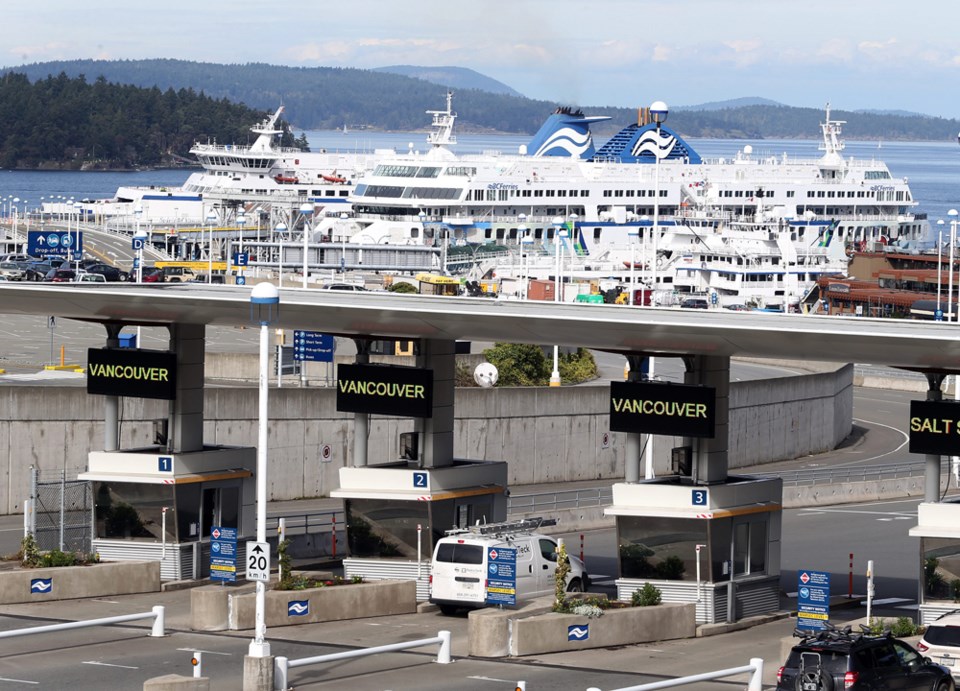Improved revenue as a result of increased traffic and a weak Canadian dollar drove B.C. Ferries well into the black during fiscal 2016, according to financial results released Friday.
B.C. Ferries reported net earnings of $69.6 million during its fiscal year ended March 31, a jump from the $49.1 million earned in 2015.
“We are pleased with this year’s net earnings as they reflect an improving economic outlook for B.C. in general, as well as the success of our cost containment practices over the past few years along with the recent increase in traffic,” chief executive Mike Corrigan said in a statement.
“Put into context, this year’s earnings are approximately the cost of one of the three new Salish-class vessels currently under construction to replace 50-year-old ships.”
Revenue jumped to $869.8 million from $841.1 million the previous year as a result of higher traffic volume.
B.C. Ferries experienced a 4.9 per cent increase in vehicle traffic and a 4.5 per cent increase in passenger traffic compared with 2015. The bump in traffic was a result of lower fuel prices, the lower Canadian dollar and promotional fare incentives, the corporation said.
The level of traffic was a return to the kind of volume last seen in 2009 prior to the turbulence in the Canadian and world economies.
Operating expenses increased from $722.5 million in 2015 to $744.2 million in fiscal 2016. B.C. Ferries said the the $21.7 million increase is primarily due to higher costs in maintenance, labour, goods sold and amortization, offset by lower fuel costs.
The corporation’s capital expenditures in the 12 months ended March 31 totalled $181.2 million; $114.2 million of that was for vessel upgrades and modifications, with the remainder for terminal marine structures, terminal and building upgrades and equipment, and information technology.
“Over the next 12 years, a $3-billion capital program is required to replace aging vessels, assets and information technology to ensure the long-term viability of our coastal ferry service,” said Corrigan. “With the average age of our fleet at 33 years, we need to renew or replace a ship a year for the next decade and continue to invest in the future.”



